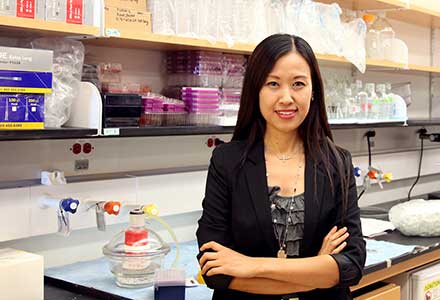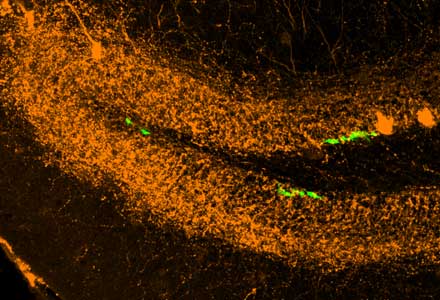In a paper published in Nature Neuroscience on November 10, Juan Song discovers how baby neurons stay alive, a key finding for understanding neurodegenerative diseases, such as Alzheimer’s.
In our adult brains, right now, new neurons are being born. That’s the good news; a healthy brain needs all the neurons it can get. The bad news is that most of those baby neurons die before they could help with cognition, memory or mood regulation.
Why do most new neurons die while a few survive? Song, a UNC School of Medicine neuroscientist, has some answers.
Her study, published in the journal Nature Neuroscience, is the first to show how specific brain cells communicate with each other during adult neurogenesis – the creation of new neurons. She also found that one cell type – PV+ interneurons – can be stimulated to help baby neurons survive and thrive even as older neurons die.
Neurodegenerative conditions such as dementia or Alzheimer’s disease
“We now know how newborn neurons can be regenerated in specific regions of the brain,” said Song, assistant professor in the department of pharmacology and the UNC Neuroscience Center. The finding has wide implications for people with neurodegenerative conditions, such as dementia or Alzheimer’s disease, and perhaps for patients with brain damage. “By showing how interneurons are a part of neurogenesis, we can see how it’s possible to regenerate cells in parts of the brain that are damaged, for example, because of a stroke.”
Read UNC front page spotlighted article
Read the full UNC School of Medicine’s Vital Signs article (“A Real Mindbender” by Mark Derewicz, Vital Signs, November 26 issue)
Read article in Nature Neuroscience, 16: 1728–1730, 2013, published Nov. 10 online.
Above image: Baby neurons (green) attached to terminals of interneurons (orange).


